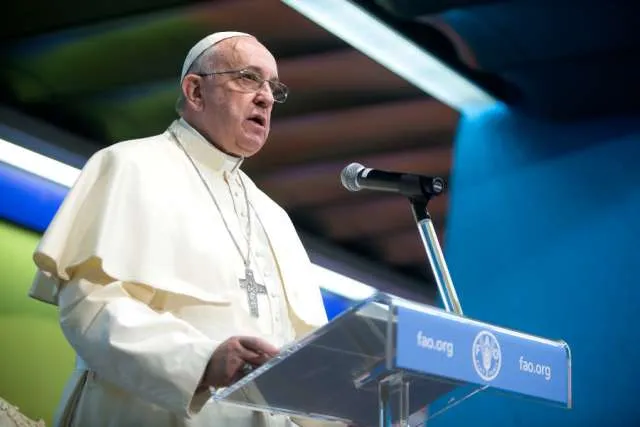
Vatican City, Jan 13, 2024 / 04:00 am (CNA).
After a long journey to the Catholic faith, Hilary (born in 310) was baptized in 345 and elected bishop of Poitiers in 353. His first work, “Commentary on the Gospel of Matthew,” is the oldest surviving Latin commentary on that Gospel. Pope Pius IX formally recognized him as a doctor of the Church in 1851.
During a Wednesday audience in St. Peter’s Square in October 2007, Pope Benedict XVI said St. Hilary of Poitiers was someone who battled against the Arian heresy, which said that Jesus is not divine. Benedict said that Hilary of Poitiers’ teaching shows us that “the path to Christ is open to everyone … although it always requires individual conversion.”
Hilary had many great qualities, among which the Holy Father noted were his “spirit of conciliation that seeks to understand those who have not already arrived and helps them, with great theological knowledge, to reach the full faith in the true divinity of Jesus Christ.”
Along with this, Hilary had another “great gift,” the Holy Father said: “to join strength in the faith and meekness in his relations with others.”
Hilary was exiled to Phrygia in Turkey in 356 by Arian bishops at the so-called “synod of false apostles” by order of the emperor Constantius, who had aligned himself with the decisions at the synod. Following the emperor’s death in 361, Hilary returned to Poitiers, where he remained until his own demise six years later.
In his most important work, “De Trinitate,” St. Hilary “describes his personal journey to a knowledge of God and is concerned to show how sacred Scripture clearly testifies to the divinity of the Son and his equality with the Father, not only in the New Testament but also in the Old, where the mystery of Christ is already apparent,” the pope said.
The bishop of Poitiers, Benedict said, “develops all his Trinitarian theology on the basis of the formula of baptism, which the Lord himself gives us, in the name of the Father, of the Son, and of the Holy Spirit.”
Benedict explained how St. Hilary presents “precise rules” for a correct reading of the Gospel when he indicates how “some pages of Scripture speak of Jesus as God, others underline his humanity, others still … his preexistence at the side of the Father … his descent to death … his resurrection.”
“Firm in his opposition to radical Arians, Hilary showed a more conciliatory spirit towards to those who were prepared to confess that the Son was like to the Father in essence, always seeking to lead them to a complete faith: … not just likeness but equality … in divinity.”
The beauty of Hilary’s words and of his consciousness of the seriousness and grace of his baptism lead him to pray:
“Grant, O Lord, that I may remain faithful to what I have professed in the symbol of my regeneration, when I was baptized in the Father, in the Son, and in the Holy Spirit. May I adore you, our Father, and together with you your Son; may I merit your Holy Spirit, which proceeds from you through your only Son … Amen” (De Trinitate, 12,57).
This article was previously published Oct. 10, 2007, and has been updated.
If you value the news and views Catholic World Report provides, please consider donating to support our efforts. Your contribution will help us continue to make CWR available to all readers worldwide for free, without a subscription. Thank you for your generosity!
Click here for more information on donating to CWR. Click here to sign up for our newsletter.





Leave a Reply